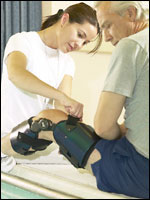|
|

|
|
|
home | recommended
care advisers | how a care
adviser can help you | choosing
care | paying for care | discharge
planning The Care Directory |
|
|
• Nursing Homes • Care Homes • Nursing Care
Homes • Care Agencies • Care at Home • Residential Homes •
Residential Care Homes • Nursing Care
© Copyright 2003 - 2025 : The Care Directory and its licensors - All Rights Reserved |
|
| Nursing
Homes & Care Homes in Avon Nursing Homes & Care Homes in Bedfordshire Nursing Homes & Care Homes in Berkshire Nursing Homes & Care Homes in Birmingham Nursing Homes & Care Homes in Buckinghamshire Nursing Homes & Care Homes in Cambridgeshire Nursing Homes & Care Homes in Cheshire Nursing Homes & Care Homes in Cleveland Nursing Homes & Care Homes in Cornwall Nursing Homes & Care Homes in Cumbria Nursing Homes & Care Homes in Derbyshire Nursing Homes & Care Homes in Devon Nursing Homes & Care Homes in Dorset Nursing Homes & Care Homes in Durham Nursing Homes & Care Homes in East Sussex Nursing Homes & Care Homes in East Yorkshire |
Nursing
Homes & Care Homes in English Isles Nursing Homes & Care Homes in Essex Nursing Homes & Care Homes in Gloucestershire Nursing Homes & Care Homes in Hampshire Nursing Homes & Care Homes in Hereford & Worcester Nursing Homes & Care Homes in Hertfordshire Nursing Homes & Care Homes in Kent Nursing Homes & Care Homes in Lancashire Nursing Homes & Care Homes in Leicestershire Nursing Homes & Care Homes in Lincolnshire Nursing Homes & Care Homes in London Nursing Homes & Care Homes in Manchester Nursing Homes & Care Homes in Merseyside Nursing Homes & Care Homes in Middlesex Nursing Homes & Care Homes in Norfolk Nursing Homes & Care Homes in North Yorkshire |
Nursing
Homes & Care Homes in Northamptonshire Nursing Homes & Care Homes in Northumberland Nursing Homes & Care Homes in Nottinghamshire Nursing Homes & Care Homes in Oxfordshire Nursing Homes & Care Homes in Shropshire Nursing Homes & Care Homes in Somerset Nursing Homes & Care Homes in South Yorkshire Nursing Homes & Care Homes in Staffordshire Nursing Homes & Care Homes in Suffolk Nursing Homes & Care Homes in Surrey Nursing Homes & Care Homes in Tyne and Wear Nursing Homes & Care Homes in Warwickshire Nursing Homes & Care Homes in West Sussex Nursing Homes & Care Homes in West Yorkshire Nursing Homes & Care Homes in Wiltshire |
Nursing
Homes & Care Homes in Aberdeenshire Nursing Homes & Care Homes in Ayrshire Nursing Homes & Care Homes in Dumfries Nursing Homes & Care Homes in Falkirk Nursing Homes & Care Homes in Fife Nursing Homes & Care Homes in Forth-Valley Nursing Homes & Care Homes in Glasgow and Inverclyde Nursing Homes & Care Homes in Highlands Nursing Homes & Care Homes in Lanarkshire Nursing Homes & Care Homes in Lothian Nursing Homes & Care Homes in Perth and Kinross Nursing Homes & Care Homes in Scottish Borders Nursing Homes & Care Homes in Scottish Isles Nursing Homes & Care Homes in Tayside |
Nursing
Homes & Care Homes in Clwyd Nursing Homes & Care Homes in Dyfed Nursing Homes & Care Homes in Gwent Nursing Homes & Care Homes in Gwynedd Nursing Homes & Care Homes in Powys Nursing Homes & Care Homes in Glamorgan Nursing Homes & Care Homes in Antrim Nursing Homes & Care Homes in Armagh Nursing Homes & Care Homes in County Down Nursing Homes & Care Homes in Derry Nursing Homes & Care Homes in Fermanagh Nursing Homes & Care Homes in Tyrone |




 Grab
rails
Grab
rails 
